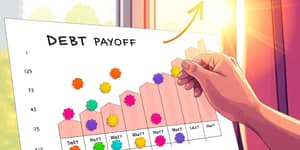
Feeling the weight of unpaid bills can be paralyzing. If you are feeling overwhelmed by debt, you are not alone. Millions seek a path to stability, but the road is lined with choices and potential pitfalls.
This guide offers a comprehensive overview of the most common debt relief solutions, equipping you with the insights needed to decide wisely and move confidently toward financial freedom.
Debt relief is more than just a buzzword; it encompasses solid foundation for financial stability through various structured approaches. Each program differs in eligibility, cost, and long-term impact on your credit.
By dissecting these differences, you can avoid common traps and select the option that aligns with your unique financial profile and goals.
Before committing, it’s essential to grasp the mechanics of each solution. While some prioritize negotiation, others focus on restructuring or legal discharge.
Each path carries distinct timelines, fees, and credit outcomes. Knowing these specifics ahead of time will prevent surprises down the road.
Understanding upfront costs and eligibility requirements can save you from costly missteps. Some programs demand strict criteria, while others offer greater flexibility at a price.
Delays in payment or falling short on qualifications can disrupt your progress and sometimes trigger penalties or higher interest rates.
Not every offer is created equal, and a low monthly fee can hide steep long-term costs. Your goal should be a true comprehensive cost-benefit analysis that weighs immediate relief against future obligations.
Scams are rampant in the debt relief industry. Watch for companies that demand upfront fees or promise guaranteed waivers. Under the law, you should only pay after a settlement is reached or services rendered.
Protect yourself by choosing industry-certified nonprofit credit counselors and verifying accreditation with established bodies. Always require clear written disclosures on fees, timelines, and the projected credit impact.
Deciding on the best option means assessing your debt size, income stability, and willingness to commit to a repayment schedule. For smaller balances, a do it yourself negotiation strategies approach may suffice.
Those with larger pockets of unsecured debt might find settlement services appealing, despite the credit hit. If your situation is dire, bankruptcy can offer a fresh start, though it carries the most severe long-term consequences.
Before you sign any agreement, take these prudent steps:
1. Research provider reputation through consumer reviews and complaints. 2. Request a detailed contract outlining all fees and milestones. 3. Consult a qualified tax or legal adviser to understand side effects. 4. Keep communication records and payment receipts in case disputes arise.
Regaining control over your finances is an empowering journey. Each successful payment, no matter how small, brings you one step closer to freedom from stress and uncertainty.
By approaching debt relief with knowledge, caution, and perseverance, you can transform daunting balances into manageable milestones. Remember, this process is not just about numbers—it is about reshaping your relationship with money and building a brighter tomorrow.
Embrace this chapter with confidence, knowing that with the right strategy and support, a debt-free life is within your reach. Focus on the progress you make each month, and let every milestone fuel your determination toward long-term stability.
References













